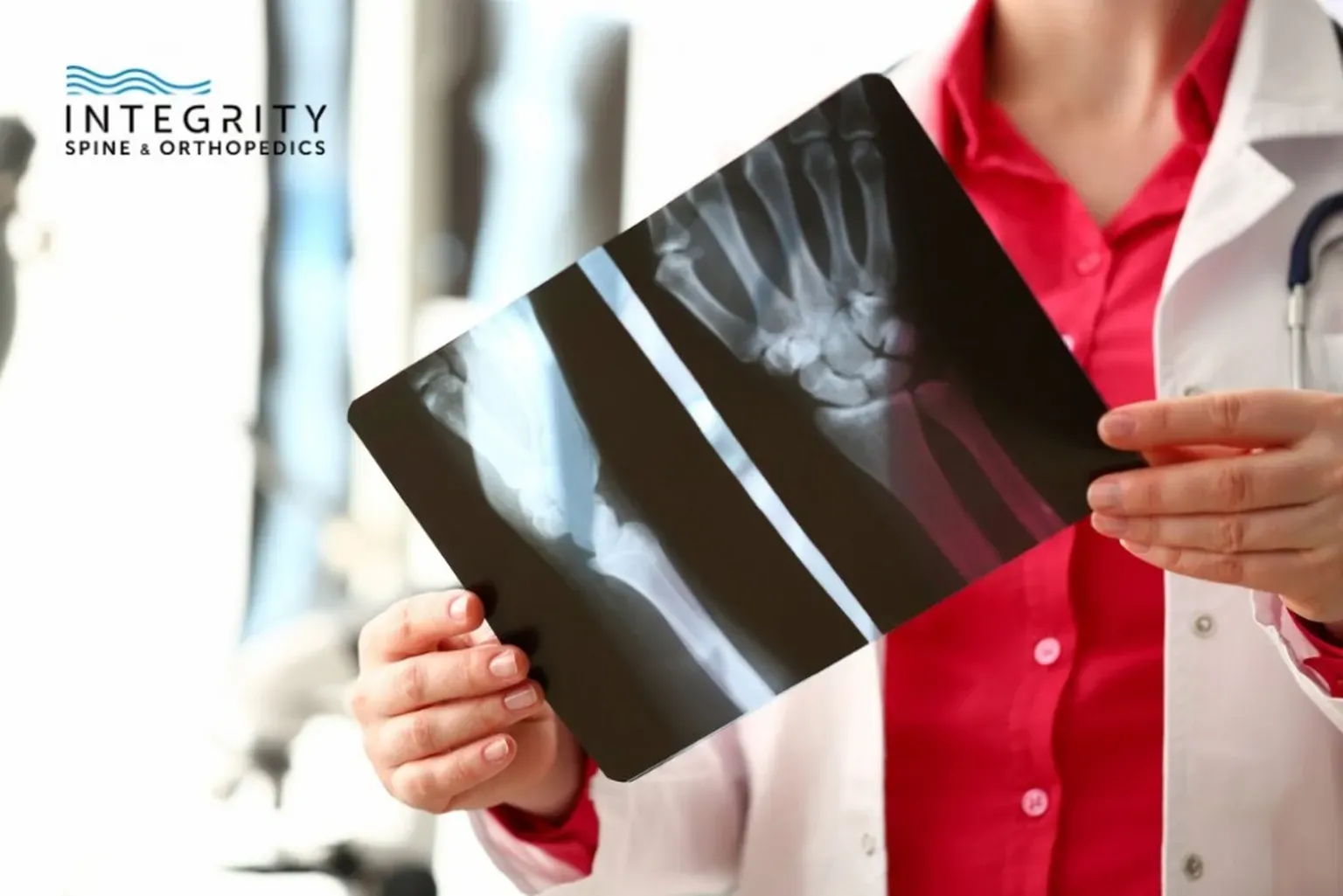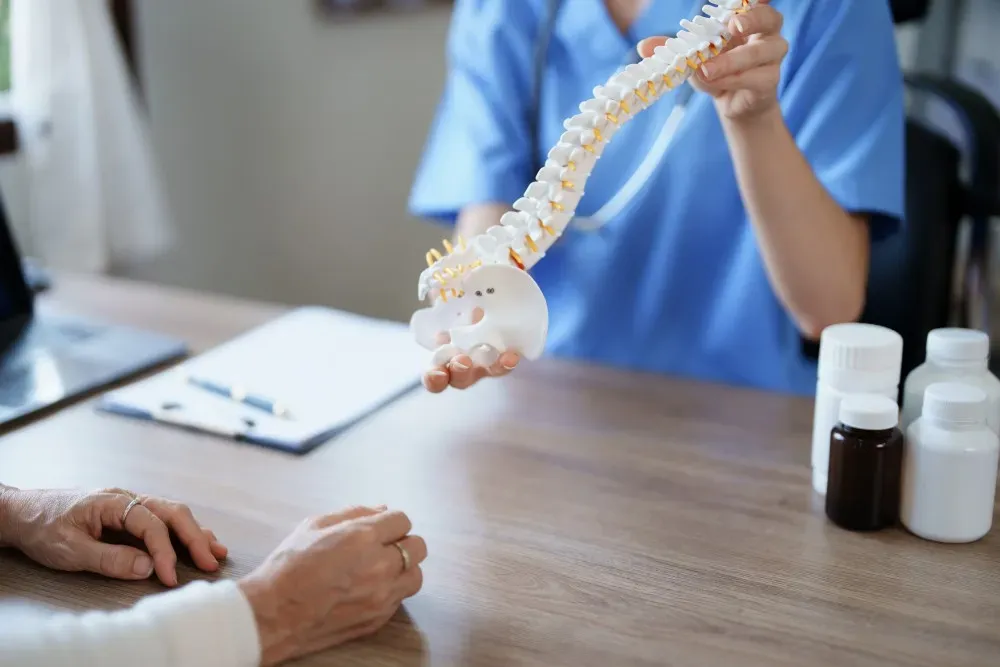Neurosurgery & Orthopedic Surgeons in Jacksonville

What is a Fracture?
Human bone is as strong as steel, which means it can withstand an incredible amount of impact without taking damage. However, in conditions where bone is placed under more stress or force than it can bear, it may crack, break or shatter.
Human bone is as strong as steel, which means it can withstand an incredible amount of impact without taking damage. However, in conditions where bone is placed under more stress or force than it can bear, it may crack, break or shatter. This type of injury is called a fracture.
Below, read our comprehensive guide on how fractures occur and how they’re treated.
TYPES OF FRACTURES
There are several types of fractures, from a thin crack (called a hairline fracture) to a complete break into several pieces. To start, fractures are closed or open:
- A closed or simple fracture does not break the skin.
- An open or compound fracture breaks the skin, reveals visible bone and damages surrounding tissues. Compound fractures have a high risk of infection.
Next, fractures are incomplete or complete:
- In an incomplete fracture, the bone cracks without breaking completely
- In a complete fracture, the bone breaks completely into 2 or more pieces
Lastly, fractures are non-displaced or displaced:
- In a non-displaced fracture, the bone breaks without moving out of alignment
- In a displaced fracture, the bone breaks and moves out of alignment
Under these main categories, there are multiple subtypes of fractures.
CAUSES AND RISK FACTORS
Human bones are incredibly strong, durable and able to withstand a large amount of force or pressure exerted upon them. However, when impacted with more force than they can support, bones will crack or break. Common accidents that cause fractures include:
- Falls
- Traumatic events like car accidents
- Sports injuries
Hairline fractures (also called stress fractures) are a common sports injury for athletes. They can develop from performing repetitive movements that place a lot of stress on the bones — like running or jumping.
Aging is the primary risk factor for fractures because bones become more brittle and lose bone density over time. Additionally, aging increases the risk of falling and sustaining significant injury. Other risk factors include being physically inactive, drinking alcohol and smoking or using tobacco products.
Certain cancers and medical conditions like osteoporosis also increase your risk of sustaining bone fractures. Broken bones that are caused by a disease — rather than an external injury or accident — are called pathological fractures.
SYMPTOMS
The primary sign of a fracture is severe pain at the site of the break. Pain may become worse when you move or touch the injured area. Other symptoms of a fracture include swelling, redness, bruising or discoloration around the broken bone.
The following signs may also be present:
- A snapping, popping or grinding sound at the time of injury
- An inability to support weight at the injured area
- An inability to move the injured area
- Visible deformity at the site of injury
- Bone exposure
If the break is severe or you experience a tremendous amount of pain, you may also have symptoms of shock: dizziness, chills, nausea, vomiting or loss of consciousness. You should seek medical care immediately if you experience any of the above symptoms of a fracture.
DIAGNOSIS AND TREATMENT
Seek medical care to treat a cracked or broken bone. Your doctor will perform a physical examination and take X-rays to make a diagnosis. An X-ray will reveal the type of fracture you have and its location, along with any surrounding damage.
Bone healing is a natural process, but the broken bone must be placed in optimal conditions for it to heal properly. The severity and location of your fracture will determine your treatment. Some bones heal with a cast or sling. More severe breaks may require surgery, where your doctor will place metal screws, rods or pins to hold the broken bone in place.
During the healing process, new bone grows back between the broken edges to restore bone integrity. Therefore a fractured bone must remain immobile and stabilized throughout the entire recovery to ensure it heals in the proper position.
The average recovery time is 6-8 weeks, although it can vary depending on the severity of the injury or the presence of risk factors. If you smoke, your healing process may be slower. During this time, you may receive medications for pain and infection control. While your pain will likely end several weeks before your bone is healed, you’ll still need to limit movement and modify your normal routines until recovery is complete. Post-recovery, your doctor may recommend physical therapy to help you regain strength, endurance, flexibility and range of motion.
TIPS FOR MAINTAINING HEALTHY BONES
While you can’t always prevent fractures, you can take action at home to keep your bones strong and healthy.
- Make sure your diet has adequate calcium, a nutrient that’s essential for strong bones. If you’re not getting enough calcium in your diet, ask your doctor about multivitamins that include calcium.
- Get adequate vitamin D, another nutrient that contributes to healthy bones. You can get vitamin D naturally through diet and sunlight exposure (but be careful to limit sunlight exposure to a safe amount).
- Next stay physically active. Regular exercise strengthens your muscles and bones, improves balance and increases flexibility. Weight-bearing exercises are great for maintaining bone strength.
INTEGRITY SPINE AND ORTHOPEDICS TREATS SPINE AND JOINT CONDITIONS
At Integrity Spine and Orthopedics, we offer several treatment options for a range of back and joint conditions. Our board-certified physicians specialize in:
- General orthopedics
- Pain management
- Regenerative medicine
- Minimally invasive spinal procedures
If you’re experiencing pain, decreased functionality or loss of mobility, we may be able to help. Call us today at 904-456-0017 to schedule an appointment. If you already have a previously diagnosed spine or joint condition and would like a second opinion, we also offer free MRI reviews to qualified patients.




